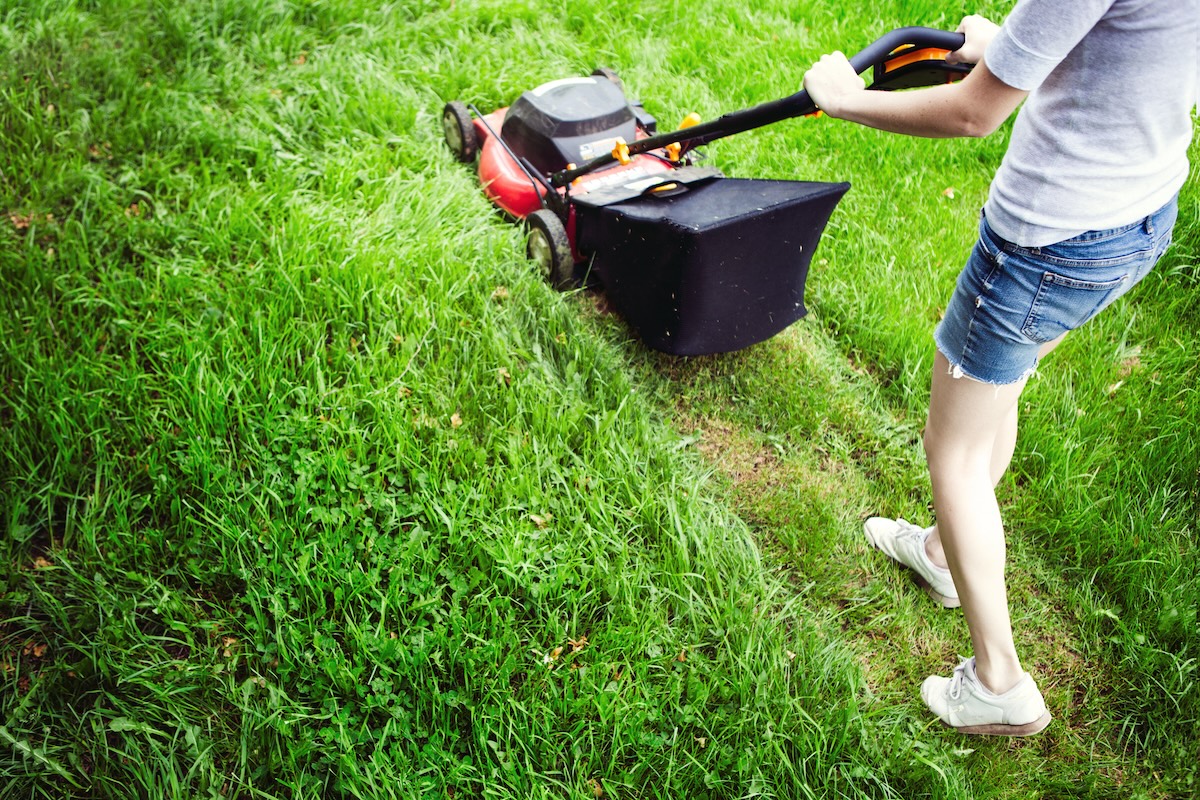

We may earn revenue from the products available on this page and participate in affiliate programs. Learn More ›
While you might have heard conflicting information about whether it’s OK to mow your lawn when it’s wet, the experts we surveyed are in agreement: As Colorado landscaper Ross Hulstein succinctly puts it, “Mowing wet grass is a bad idea.”
Whether your grass is wet from morning dew, overnight rain, or sprinklers, it’s best to tackle some other outdoor chores while you wait for the sun to do its magic and dry the lawn before you haul out your mower.
Is It Bad to Mow Wet Grass?
Wet grass is hard on your mower and bad for the health of the lawn, and a lawn mown when wet is not a pretty sight. “The lawn itself looks exhausted after such a procedure,” says Hulstein, whose company, Enviroscapes, does landscape design and construction in the Denver area. It’s also unsafe for the person pushing the mower around on wet, slippery grass.
7 Reasons to Avoid Mowing Wet Grass
Mowing the lawn is all about keeping it looking nice and ensuring it’s healthy, right? Mowing grass when it’s wet works counter to those goals, and you’re likely to end up with a bigger mess than you started with. Here are some good reasons why the answer to the question “Can you mow wet grass?” is essentially, “No.”
1. Water can damage the lawn mower.
Using an electric lawn mower on wet grass, especially with an extension cord, runs the risk of electric shock. “An electric mower can become dangerous if the cable touches moisture somewhere,” says Hulstein. When the connections or any wiring within worn or damaged portions of the cord are exposed to moisture, it can damage the machine—and possibly electrocute the operator.
Even if you’re using a gas-powered lawn mower, rainwater might get into the fuel tank. This can cause the engine to malfunction and stop working altogether. Over time, water can cause corrosion of engine parts, leading to expensive-to-repair damage.
2. Wet grass can strain the mower.
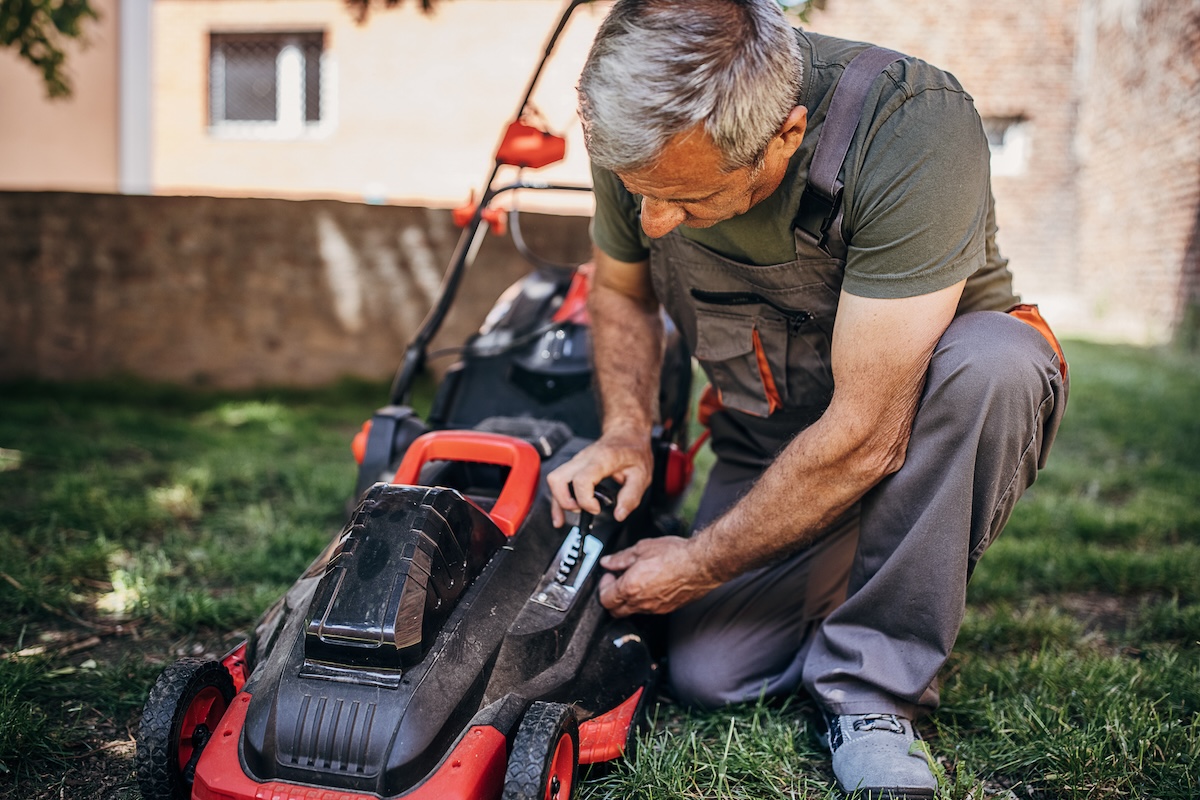
A lawn mower and wet grass do not get along well. “Mowing wet grass can put extra strain on the mower’s engine and blades,” says Chandler Moncada, who works with CGL Landscaping in Phoenix.
“Wet grass is heavier and can clog up the mower deck, leading to decreased performance and potential damage to the mower’s components,” according to Moncada. If you’re not cleaning carefully as you go, blockages force the machine to work harder until it ultimately shuts off.
Additionally, without the appropriate fuel stabilizer, when you cut the grass after rain, leftover fuel in the mower’s gas tank can be contaminated with moisture, which can corrode your machine.
3. Wet grass can be hazardous.
Aside from the risk of electric shock, simply walking across a slick lawn can be dangerous. “It can be unsafe for you as the mower operator because wet grass can be slippery, increasing the risk of slips and falls,” says Moncada. Ward Dilmore, founder and head landscape designer at Petrus in the San Francisco Bay Area, concurs: “It is not the best environment to operate a machine with spinning blades!”
The risks are significant. A tumble in wet weather could result in your head smacking up against that beautiful stone edging you just installed or on the adjacent driveway. Heavy rain can impair your ability to see what you’re mowing and where you’re going. If you wear eyeglasses or safety goggles, cutting grass in the rain could cause the eyewear to become fogged up or coated in water, further diminishing your ability to see clearly.

Tried-and-True Advice
“When mowing large properties on a riding lawn mower, waiting after a rain is even more critical. These mowers can weigh about 500 pounds, plus the weight of the rider. I’ve started mowing acreage only to realize that some of the shady areas are not nearly as dry as the spots I checked closer to the house. This led to a few large ruts, an eyesore and tripping or slipping hazard that takes a little work to fix.
Even when grass appears dry, the volume of grass most riding mowers cut can lead to some sticking and buildup on the blades. I would always take time after finishing the day’s mowing to hook up our riding mower’s wash-out port to the garden hose and run the engine as directed to thoroughly wash out wet grass, mud, and the rocks or debris that stuck to the gunk. If you’re in the market for a riding mower, try to choose one that has a similar cleaning option and find a spot near a hose that allows enough space for the mower to safely shoot out debris per its manufacturer’s instructions.”
—Teresa Odle, Contributing Writer and Editor
4. Mowing a wet lawn tears the grass, leading to uneven cuts.
Blades of wet grass are slick and tough to slice, creating an uneven shred (at best), which is yet another reason not to mow the lawn when it’s wet. Mowing wet grass “can cause the grass to tear rather than being cleanly cut,” says Moncada. Hulstein agrees: “The blades chew the stems instead of cutting them. The blades of grass are usually torn; the roots are crushed,”
Additionally, wet grass clumps together, and because it’s harder for the lawn mower blades to cut through thick clumps, you end up with a raggedy mess. Making things even worse, the wet, soggy ground a mower encounters after rain is more likely to allow grass to be pulled up by dull mower blades rather than cleanly cut.
5. Mowing wet grass can spread fungal diseases.
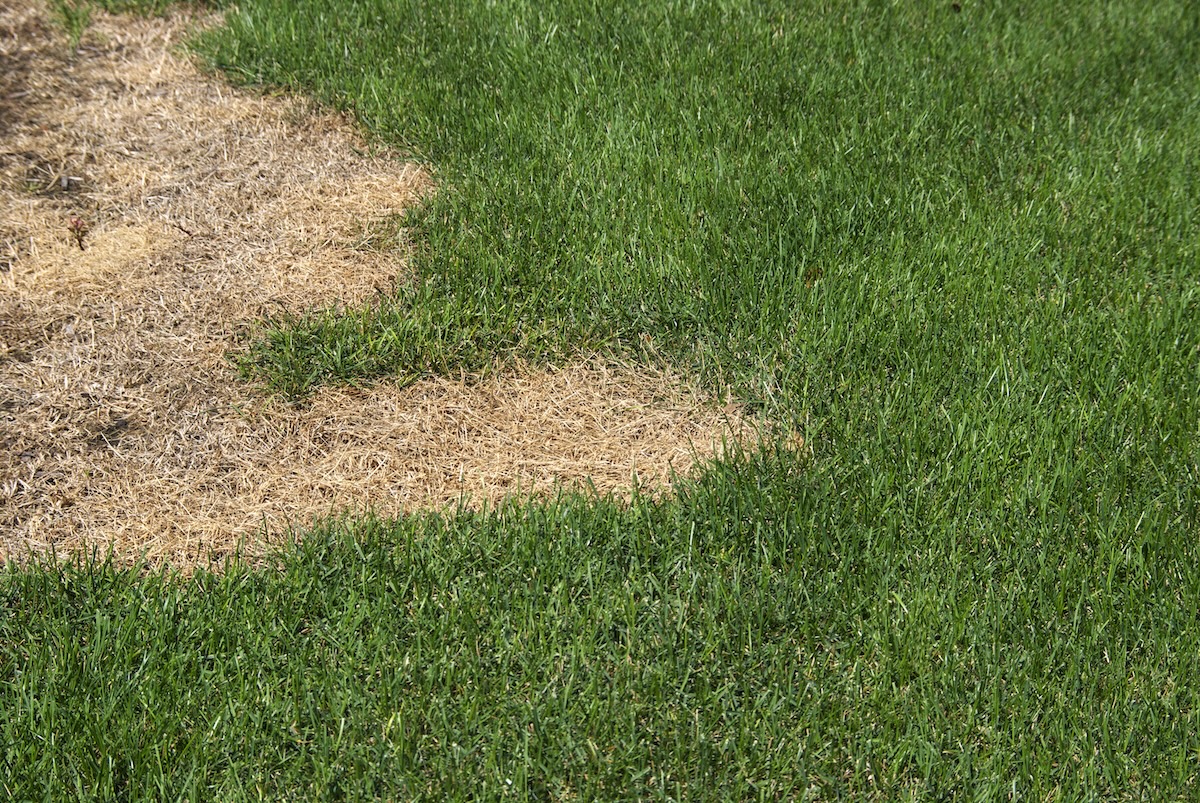
“Mowing wet grass can be harmful to your lawn,” says Moncada. Tearing rather than cutting the blades “can stress the grass and make it more susceptible to diseases,” he adds. Because fungus thrives in wet environments, it shouldn’t come as a surprise that conditions such as brown patch disease can develop on a lawn that’s been cut right after a rainstorm.
“The grass sticks together in clumps, clings to the blades and wheels, settles on the lawn, and suffocates it,” says Hulstein. When you leave clumps of damp, matted clippings on the lawn without sufficient airflow to dry them out, the grass becomes more vulnerable to fungal diseases. “When large clumps are left, they will shade out the healthy lawn underneath,” says Dilmore, “burning and even killing some grass in areas, which will leave patches of yellow or dead grass.” In fact, according to Hulstein, the lawn “becomes a breeding ground for diseases.” The wet grass clippings that stick to the underside of the mower deck can grow mold, too, which can be spread to your lawn the next time you mow.
6. Mowing a wet lawn can cause soil damage.
Cutting grass when it’s wet can damage the soil. Lawn mowers are heavy machines that are not designed for use on soft, muddy ground. The mower’s wheels (and even your shoes) can compact saturated soil or even cause ruts to form, damaging roots and hindering the growth of healthy grass in the future. Always check the soil before firing up your lawn mower. If it looks muddy or feels soft, it’s probably better to wait on cutting the grass.
7. Cutting a wet lawn makes cleanup harder.
Grass clippings get extra clingy when they’re wet, so mowing grass when it’s wet requires extra cleanup. The damp grass clippings that stick underneath the mower deck can create a breeding ground for mold—and eventually lead to a busted mower—if the machinery stays too moist for too long.
If you do run the mower when the grass is wet, be sure to scrape the deck clean of those stuck-on blades of grass, brush off the tires, and wipe down the body of the mower. Then, turn your attention to the grass stains left on surfaces and clothing. Chlorophyll in freshly cut wet grass will cause more stains to develop than you’d get on a typical mowing day, so be prepared to remove grass stains from your clothes, shoes, and driveway right away.
What to Do if You Need to Mow Wet Grass
If, despite these warnings, you absolutely insist on mowing your wet yard—the king is on his way over for a spot of tea, perhaps—take a few precautions to improve your chances of success. “Act cleverly and carefully,” cautions Hulstein. “Move slowly, without jerking, to avoid skidding and leaving ruts,” he adds.
Test soil saturation.
Before mowing wet grass, ensure that you take safety precautions. First, test the soil’s saturation. When standing on your lawn, you should not sink into it or see water rising around the edges of your shoes—mowing through so much water is a bad idea. As long as there’s no standing water, you may be able to tame your damp yard to some degree using a stabilized gas-powered mower with sharp blades.
Keep the mower blades sharp.
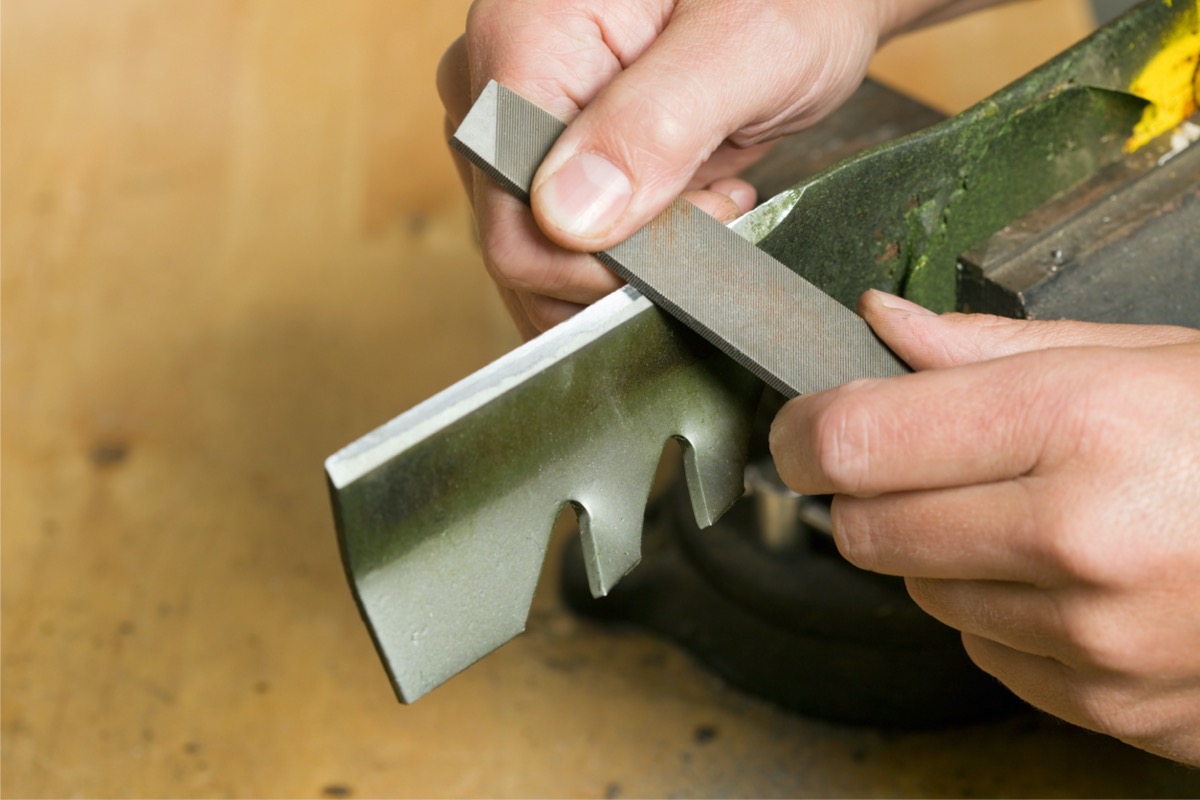
Try cutting a wet lawn only if your mower blades are in peak condition, either newly sharpened or recently replaced. “Make sure your blades are very sharp to help reduce tearing and to create a clean cut,” says Dilmore. If they are less than scalpel-sharp, you might need to make two or three passes over the same patch of wet lawn to get even a fraction of the cut you’d get if the lawn were dry. And you definitely don’t want to be toiling in the yard when His Majesty rolls up! In general, lawn mower blades should be sharpened at least twice per season or after 25 hours of use.
Use a high setting.
“Raise the mowing height to avoid cutting too low,” says Hulstein. Change your mower deck to one of the higher settings to cut grass blades to 3 or 4 inches long and no shorter. It’s tough for a lawn mower to get a close shave when mowing wet grass, so cut it some slack if you want it to do its job as well as it can.
Use side-discharge mode.
If you can, set your mower to side-discharge mode. Though this leaves rows of cut grass on your lawn for manual bagging later, it will save you the mess of dealing with a mower bag with a wet interior. You could also try pulling Grandpa’s reel mower out of the shed—you might have the best luck with it on wet grass.
Final Thoughts
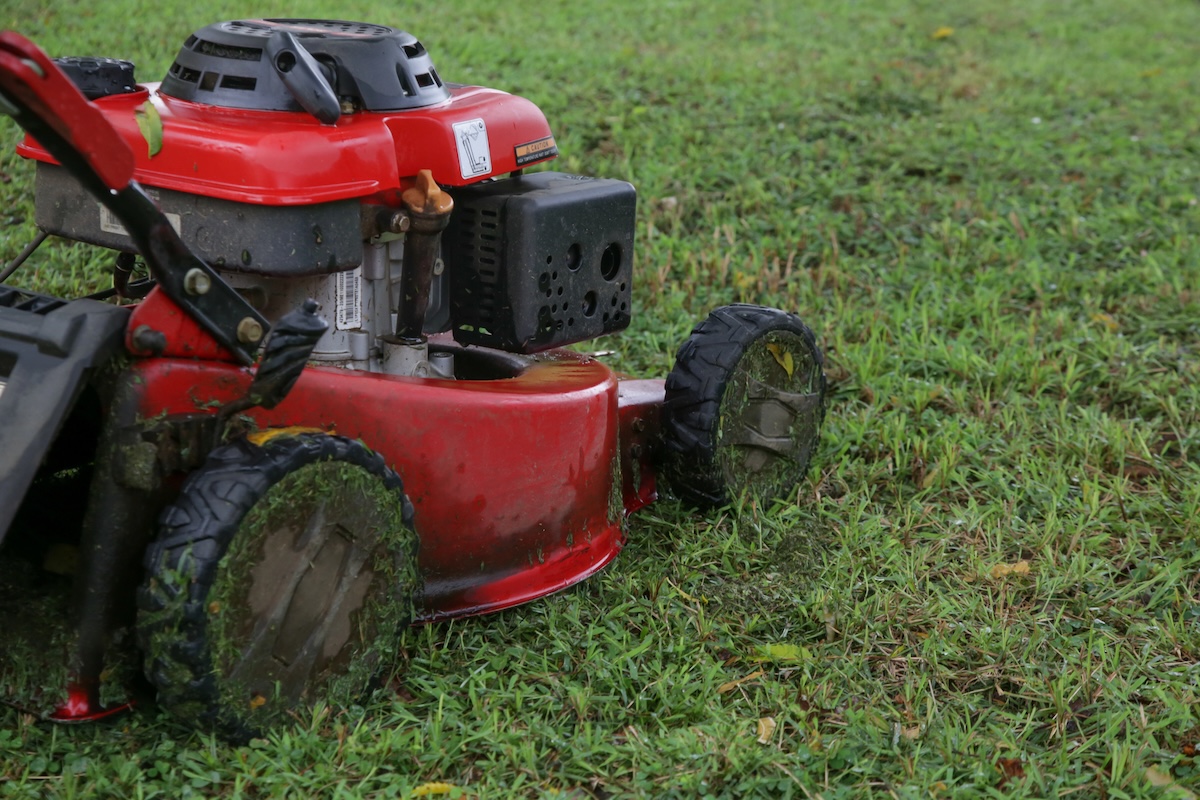
While it might be tempting to mow your lawn as soon as the rain clears, you’re better off sticking with experts’ advice on mowing wet grass and waiting until the grass is dry. Cutting wet grass can lead to a raggedy-looking lawn, plant fungal diseases, soil damage, and even mower operator injury—all of which are preventable with a little patience.
FAQs
When dealing with mild morning dew on the grass or after a light rain shower, the best time to mow the lawn is between 2 and 5 hours after the moisture has stopped forming. With a heavier rainstorm, you should wait at least one day to mow safely. Shady areas of the lawn will take longer to dry than those in the sun.
While wet grass alone may not dull a mower blade, its slick surface certainly doesn’t make the cutting process easier. And if left to sit on the blade, the saturated clippings could lead to rust and the early demise of metal mower parts like the blade.
The best time to cut grass is somewhat dependent on where you live. If your mornings are dewy and your afternoons are hot, mow during that sliver of time midmorning when the dew has dried but before the sun is scorching. If morning dew is something you only read about in sonnets and it gets hot before breakfast is on the table, the early morning is the best time to cut the grass.
